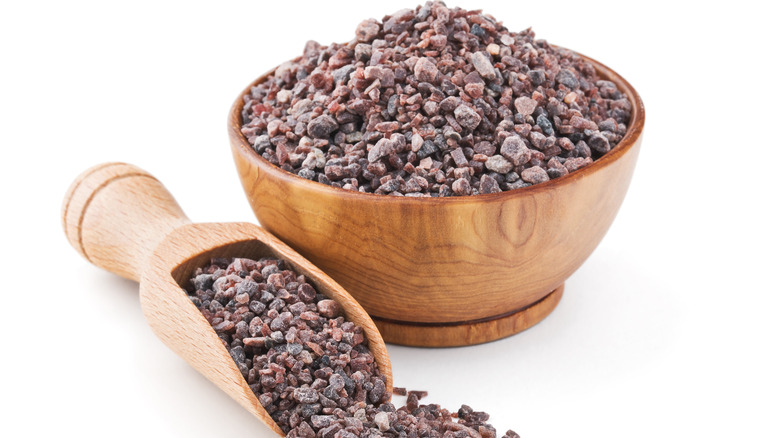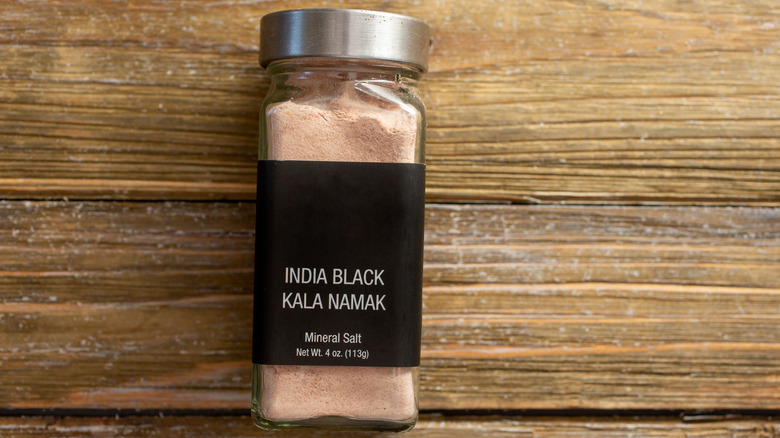Here's What Makes Black Salt Unique
While regular white table salt is featured prominently in American cuisine, it is far from the only variety out there. Black salt, a volcanic rock salt which is known by several different names, including Himalayan black salt, Indian black salt, and kala namak, is commonly used in Indian cooking and other types of Asian cuisine (via Fine Dining Lovers). The name is a bit deceiving since it isn't always black and can sometimes appear pinkish-brown or purple.
Many aspects of black salt make it unique, including where it is found and mined in the Himalayan mountain range. It possesses a distinct taste and smell that distinguishes it from table salt. Sulfur compounds lend it an aroma redolent of boiled egg yolks or rotten eggs, according to Style Craze. The taste is more of a smoky than a salty flavor. Because of this, according to Fine Dining Lovers, black salt is often incorporated in dishes as an umami enhancer that adds another nuance of flavor.
Black salt contains less sodium than regular table salt, and it is not ionized. Additionally, it features fewer additives.
Uses for black salt
The first documented use of black salt is traced back to Ayurvedic medicine, a type of holistic medicinal approach practiced in India that attributed healing properties to the mineral. It is believed to deliver health benefits such as lowering blood pressure, improving digestion, assisting in weight loss, and providing relief from cramps and bloating. However, according to Healthline, the scientific validity surrounding some of the claims of black salt's therapeutic value is disputed.
One area not in debate is that its popularity in the culinary community is trending upward. SmartBrief highlighted black salt's use in plant-based egg dishes and its incorporation into a wide variety of food and beverage applications from adorning cocktail rims to desserts.
Because of its unique smell and taste profile, black salt is often added to vegan recipes such as tofu scrambles to give them an egg-like flavor without the actual egg (via One Green Planet). It's used in the Indian spice blend chaat masala and pairs well with a range of Indian specialties including chutneys, curries, soups, and tandoori dishes. It can even be sprinkled on popcorn or kale chips to turn up the savory food component to 11.

